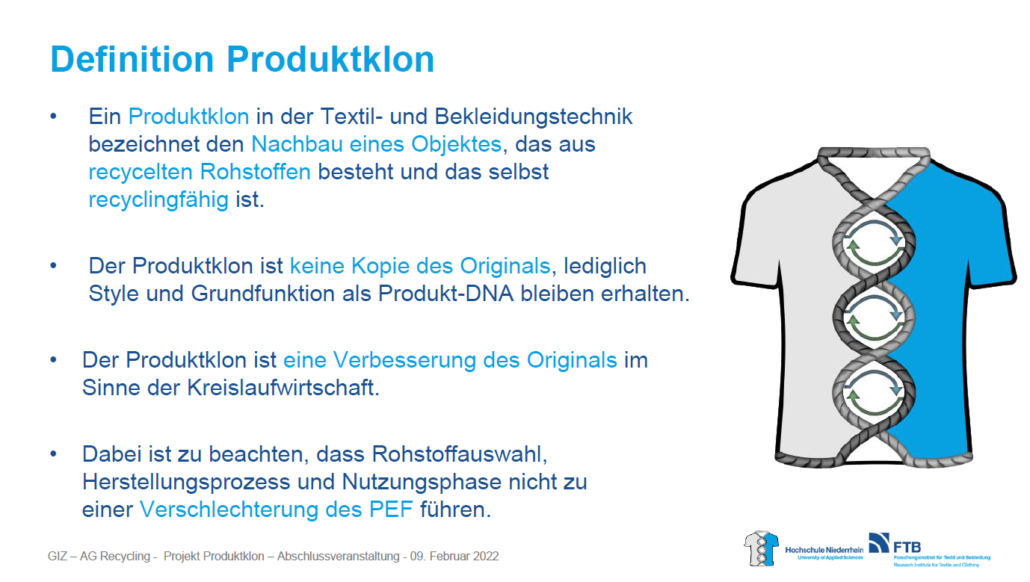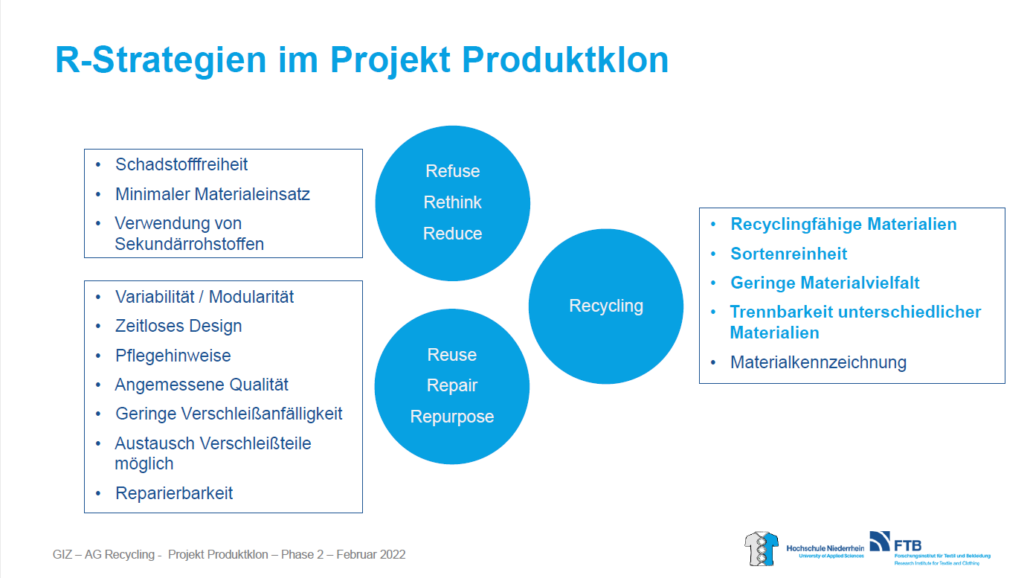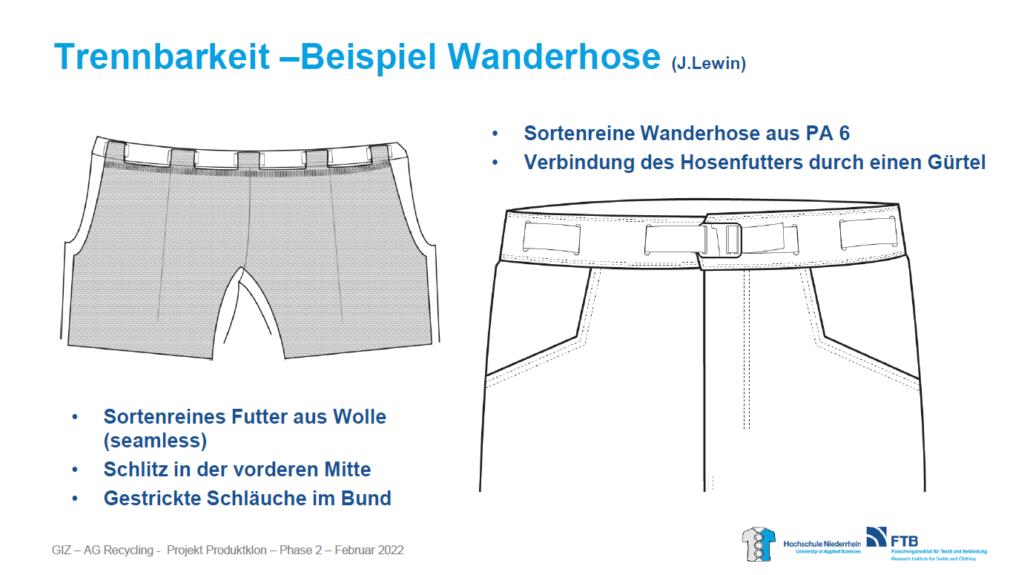Opportunities and challenges in recyclability
Opportunities and challenges in recyclability
Designing products in a sustainable and recyclable way? This is possible, as a project of the Recycling Working Group has now shown. The aim of the project is to develop more sustainable product upgrades or versions. Nine Partnership companies nominated ten of their products and had them analysed by the Faculty of Textile and Clothing Technology at the Niederrhein University of Applied Sciences with regard to recyclability, longevity and grade purity. At the beginning of February, Prof. Dipl.-Des. Ellen Bendt, Prof. Dr. Maike Rabe, M. Sc. Benita Rau and the students involved in the project presented the results and gave each company individual feedback on their product.

The main challenge is that there is no deterioration in the ecological footprint of a product as the researchers emphasized right at the beginning. The selection of raw materials, the manufacturing process, the using phase and recycling may have led to a worsening of the economy and overall ecobalance according to the current state of technology. Important areas of adjustment are avoidance, life extension and recycling, which can be illustrated by the R-strategies (derived from the waste hierarchy):

Various examples from the project showed how this can be achieved in concrete ways. Regarding the backpack from deuter, for example, the use of materials could be further minimized if unnecessary seams and parts were forewent. The wedding dress from IVY OAK could be re-dyed after the wedding and then worn as a casual dress. The strategy of modularity was particularly illustrated by hiking trousers from Ortovox: inner trousers and outer trousers are held together by a belt, but can be easily separated from each other for washing or repairing.

In addition to many creative solutions and ideas for better recyclability, the university team also addressed barriers and challenges. For instance, different materials and colors can be dyed or decolorized differently. Garments with membranes, which are often used outdoors, can sometimes be recycled mechanically or chemically with little or only a lot of effort. Digitally applicable membranes and monomaterial inserts could be a solution that enables stability and durability.
Finally, the conclusion of the project team is: the replica of the ten objects from recycled raw materials, so that they are recyclable themselves, can already be presented in parts. For socks, work trousers, hiking trousers and bed linen, they found convincing solutions which maintain the style and basic function as a permanent product DNA. Regarding other products, they developed proposals for generations of the clones in the sense of the circular economy, including a wedding dress, backpack, shirt, two weather jackets, and laminates.
Niederrhein University of Applied Sciences
Further information on the Faculty of Textile and Clothing Technology


